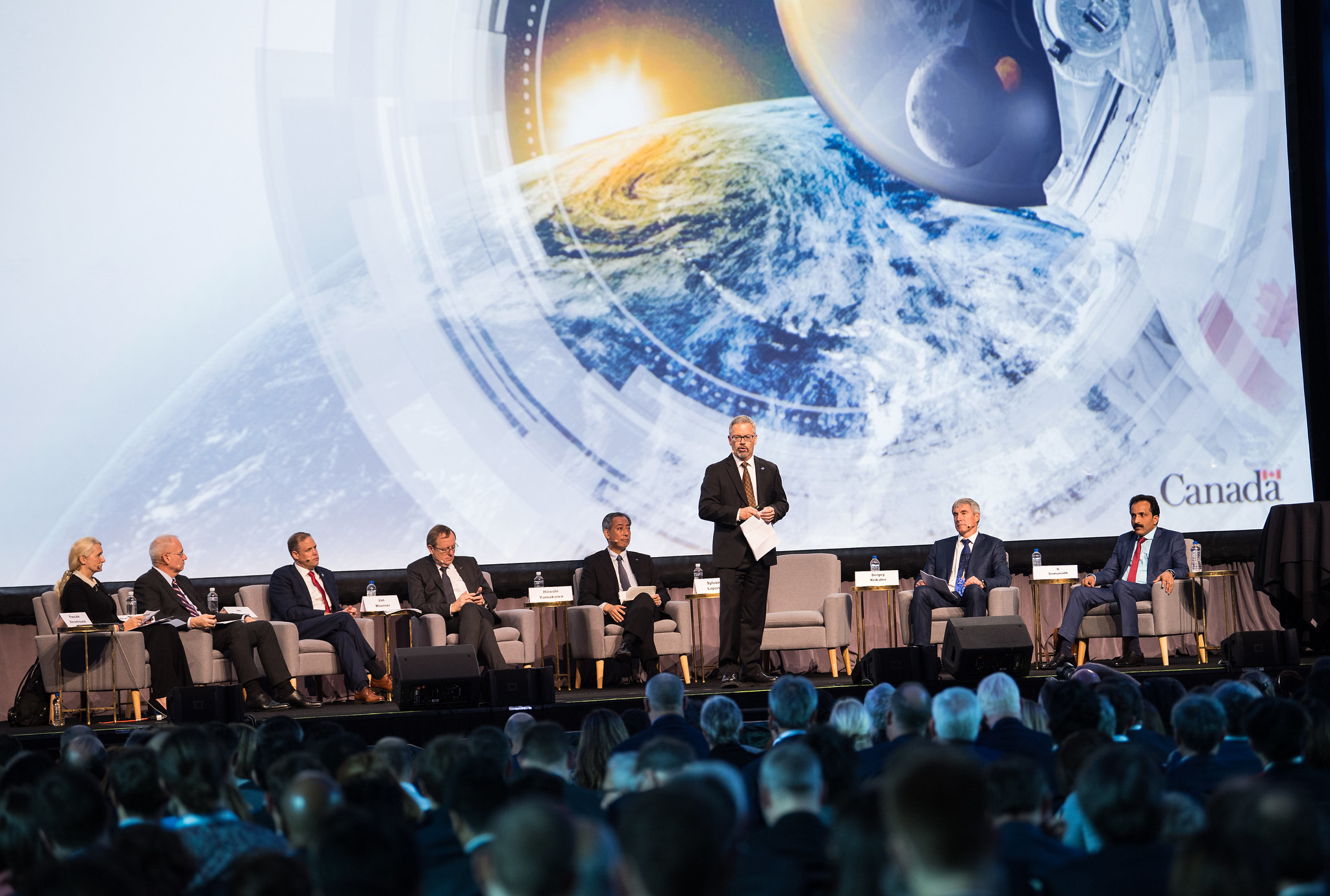Stay Up to Date
Submit your email address to receive the latest industry and Aerospace America news.
Space agencies pledge technology and funds to return humans to the moon
INTERNATIONAL ASTRONAUTICAL CONGRESS, Washington, D.C. – NASA’s directive to return Americans to the moon by 2024 is less than a year old, but it’s gaining traction among international partners.
“As we move forward, we’re going to need as much international support as possible,” NASA Administrator Jim Bridenstine told IAC attendees on Monday, where he spoke on a panel alongside the heads of the European, Canadian, Japanese, Russian and Indian space agencies.
Bridenstine has regularly touted international partnerships as key to the success of the moon program, called Artemis, and as of Monday, three of the agencies on stage had pledged assistance. The most concrete partnership is with the European Space Agency, ESA, which is building the service module that provides the power and life support systems for the Orion crew capsule astronauts will launch in. NASA and ESA signed a legally binding interagency agreement for the service module in 2013.
The other collaborations revolve around the lunar Gateway, a space station that Bridenstine has described as a “reusable command and service module” in orbit above the moon. For the 2024 landing, Gateway will consist of a power and propulsion element and a habitation module, with later upgrades coming from international partners.
In February, the Canadian Space Agency pledged $1.56 billion to develop Canadarm3, a robotic arm that will repair and maintain Gateway. A version of the robot, Canadarm2, currently does repairs and maintenance on the International Space Station. Canadarm3 will be a “major step forward” in robotics, said Sylvain Laporte, who heads the Canadian Space Agency.
“In order for it to be as autonomous as possible, [Canadarm3] will have state-of-the-art artificial intelligence to make sure that we can benefit from every moment that the arm is out there on Gateway,” he said.
Gateway received another vote of confidence just last week. On Friday, Japanese Prime Minister Shinzo Abe announced via Twitter that the Japan Aerospace Exploration Agency, or JAXA, would develop “habitation functions” for Gateway’s second phase, which would come after the proposed 2024 landing.
During the IAC panel, JAXA President Hiroshi Yamakawa noted Japan’s participation in Gateway was largely due to the fact that “international momentum for moon and Mars exploration is rapidly growing.”
Both Canada and Japan already partner with the U.S. on the International Space Station, something Bridenstine said he sees as a jumping off point for lunar exploration.
“When we go to the moon, we want to take all of the partners on the International Space Station and we want to grow it,” he said.
Another ISS partner, Russia, is also contemplating a Gateway collaboration.
“Overall we’ve decided the most efficient way” to reach the lunar surface “would be to work together,” Sergei Krikalev, executive vice president of spaceflight at Roscosmos, told reporters during a press conference after the panel. But the agency is still mulling what form that support would take.
“We need to clarify what we’re doing with the Russian program and see how that can work with the Gateway program,” he said.
However encouraging the international support might be for NASA, Artemis’ future is far from certain. Last week, the chair of the U.S. House subcommittee that oversees NASA funding said he doesn’t see a reason to move up the date of a lunar landing from 2028, NASA’s original goal before Vice President Mike Pence laid down the 2024 deadline.
“I remain extremely concerned about the additional costs to accelerate the mission to the moon by four years,” Rep. Jose Serrano, D-N.Y., told Bridenstine during an Oct. 16 hearing.
NASA will provide a cost estimate for Artemis in February 2020 in the Trump administration 2021 budget request. In the past, Bridenstine has said the lunar landing could cost around $20 billion.
About cat hofacker
Cat helps guide our coverage and keeps production of the print magazine on schedule. She became associate editor in 2021 after two years as our staff reporter. Cat joined us in 2019 after covering the 2018 congressional midterm elections as an intern for USA Today.
Related Posts
Stay Up to Date
Submit your email address to receive the latest industry and Aerospace America news.




